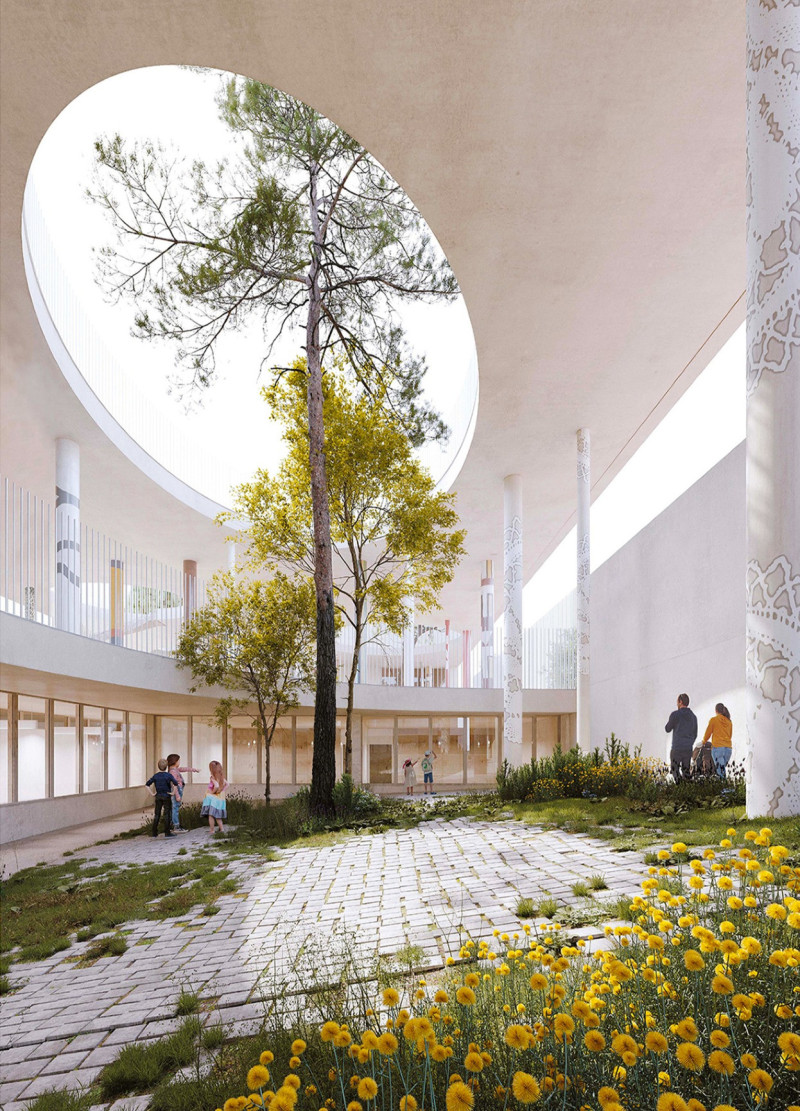5 key facts about this project
At its core, the project represents a synthesis of innovative design and pragmatic functionality. The overarching design philosophy is to create spaces that are not only aesthetically pleasing but also enhance the experience of those who occupy them. The architecture achieves this through careful consideration of materials, form, and the intricacies of spatial relationships. The use of local materials not only aids in expressing regional character but also contributes to sustainability by minimizing transportation impacts and ensuring that the building resonates with its geographical context.
One of the standout features of the project is its facade, which is designed to foster a visual dialogue between the interior and exterior environments. Large expanses of glass are interspersed with carefully chosen natural materials such as wood and stone, creating a warm and welcoming appearance. This openness promotes accessibility and encourages interaction between individuals and the space, enhancing the project's role within the community. The design thoughtfully integrates shaded areas and overhangs that protect occupants from direct sunlight while allowing for generous natural light to penetrate deep into the building.
Internally, the project embraces an open floor plan, fostering a sense of connectivity and fluidity among various spaces. This arrangement not only supports collaborative activities but also allows for adaptability in use, accommodating different group sizes and functions. Strategic placement of skylights and clerestory windows ensures that natural light plays a crucial role in improving the interior ambiance, reducing reliance on artificial lighting and fostering a healthier environment.
The project incorporates a range of sustainable features, responding to contemporary environmental challenges. Elements such as green roofs and rainwater harvesting systems exemplify a commitment to ecological responsibility, promoting biodiversity and minimizing the building's overall carbon footprint. These design strategies are not merely add-ons; they are integral to the architectural narrative of the project, illustrating a holistic approach to modern building design.
The landscape surrounding the structure is equally important to the overall architectural endeavor. Thoughtfully planned gardens and communal outdoor spaces are designed to encourage social interaction and recreation. These areas are strategically positioned to create a seamless transition between the built environment and the natural landscape, contributing to a sense of place and community.
What makes this project unique is its emphasis on user-centric design principles and its responsiveness to the local cultural context. By prioritizing community needs and fostering inclusive environments, the project stands as a model for future developments in similar settings. The careful consideration of cultural narratives and social dynamics informs not only the architectural expression but also the functional programming of the building.
The project invites further exploration of its architectural plans and sections, offering deeper insights into its intricacies and design resolutions. By examining these details, one can appreciate the rich interplay of architectural ideas that inform the overall conception and execution. Readers are encouraged to delve into the specifics of this project, considering how its thoughtful design can inspire similar initiatives in the field of architecture.


 Kristell Marie Pola Piau
Kristell Marie Pola Piau 




















